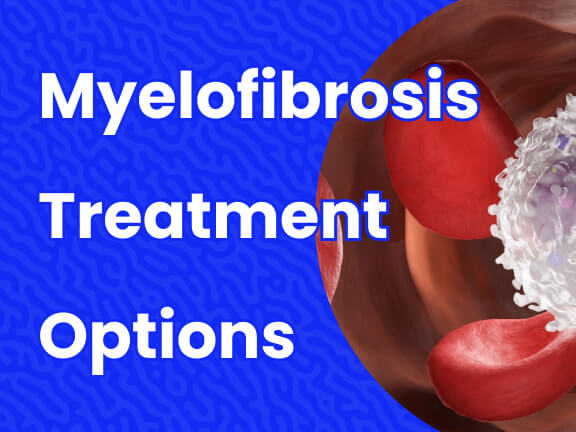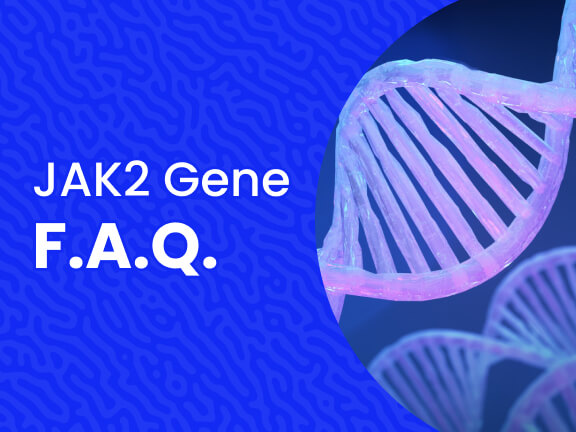Myelofibrosis Treatment for Anemia
If myelofibrosis is causing severe anemia, you may consider treatment, such as:
- Blood transfusions: If the patient has severe anemia, periodic blood transfusions can increase your red blood cell count and ease anemia symptoms, such as fatigue and weakness. Sometimes, medications can help improve anemia.
- Androgen therapy: Taking a synthetic version of the male hormone androgen may promote red blood cell production and improve severe anemia in some patients. Androgen therapy does have risks, including liver damage and masculinizing effects in female patients.
- Thalidomide and related medications: Thalidomide (Thalomid) and the related drug lenalidomide (Revlimid) may help improve blood cell counts and may also relieve an enlarged spleen. These drugs may be combined with steroid medications. Thalidomide and related drugs carry a risk of severe birth defects and require special precautions.
Treatment for an Enlarged Spleen
If an enlarged spleen is causing complications, your doctor may recommend treatment. Your options may include:
- Targeted drug therapy: Targeted drug treatments focus on specific abnormalities present within cancer cells. Targeted treatments for myelofibrosis focus on cells with the JAK2 gene mutation. These treatments are used to reduce symptoms of an enlarged spleen.
- Chemotherapy: Chemotherapy uses powerful drugs to kill cancer cells. Chemotherapy drugs may reduce the size of an enlarged spleen and relieve related symptoms
,such as pain.

- Surgical removal of the spleen (splenectomy): If the spleen becomes so large that it causes pain and harmful complications — and if the patient does not respond to other forms of therapy — they may benefit from having the spleen surgically removed.
- Risks include infection, excessive bleeding and blood clot formation leading to stroke or pulmonary embolism. After the procedure, some patients experience liver enlargement and an abnormal increase in platelet count.
- Radiation therapy: Radiation uses high-powered beams, such as X-rays and protons, to kill cancer cells. Radiation therapy can help reduce the size of the spleen when surgical removal isn’t an option.
Bone Marrow Transplant
A bone marrow transplant, also known as a stem cell transplant, is a surgery that uses healthy blood stem cells to replace damaged bone marrow. The method for myelofibrosis uses stem cells from a donor (allogeneic stem cell transplant).
Although this treatment has the potential to cure myelofibrosis, it comes with a high risk of life-threatening adverse effects, including the possibility that the new stem cells would react against the healthy tissues present in the patient’s body.
Many patients with myelofibrosis do not qualify for this treatment because of age, stability of the disease or other health problems.
Prior to a bone marrow transplant, the patient receives chemotherapy or radiation therapy to destroy the diseased bone marrow. Then receives infusions of stem cells from a compatible donor.
Supportive Care
Palliative care is a type of medical treatment that focuses on relieving pain and other symptoms associated with a serious illness. Palliative care professionals collaborate with you, your family, and your other doctors to add an extra layer of support to the ongoing treatment. Palliative care can be used in conjunction with other aggressive treatments such surgery, chemotherapy, or radiation.
Cancer patients may feel better and survive longer when palliative care is used in conjunction with all other approved treatments.
Palliative care is provided by a team of doctors, nurses and other specially trained professionals. Palliative care teams aim to improve the quality of life for cancer patients and their families. This form of care is offered alongside curative or other treatments you may be receiving.
Treatment Overview
Massive Bio specializes in finding advanced clinical treatments for every myelofibrosis type. If you’ve been diagnosed with any of the following myelofibrosis subtypes, we’re here to help. If you don’t know which type of myelofibrosis you have, that’s okay. Additional testing can help you determine your exact diagnosis.
- Primary Myelofibrosis (also known as chronic idiopathic myelofibrosis)
- Chronic Myelogenous Leukemia
- Essential Thrombocythemia (ET)
- Chronic Neutrophilic Leukemia
- Chronic Eosinophilic Leukemia
- Myelofibrosis (MF)
- Polycythemia Vera Treatment (PV)
- Multiple Myeloma Treatment
- Blood Cancer Treatment
To learn more about Myelofibrosis, read our ultimate guide: Myelofibrosis Ultimate Guide
Sources:












